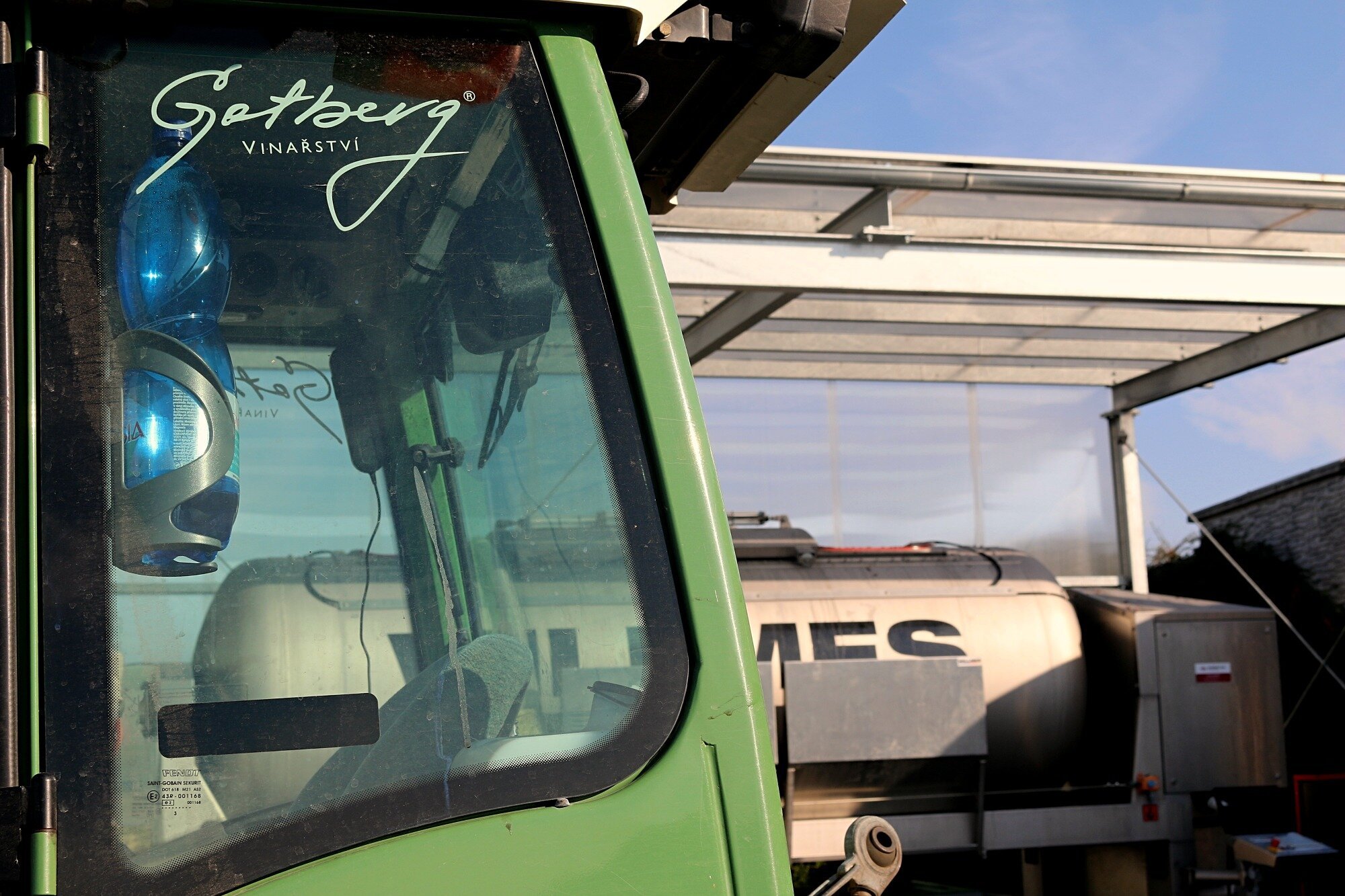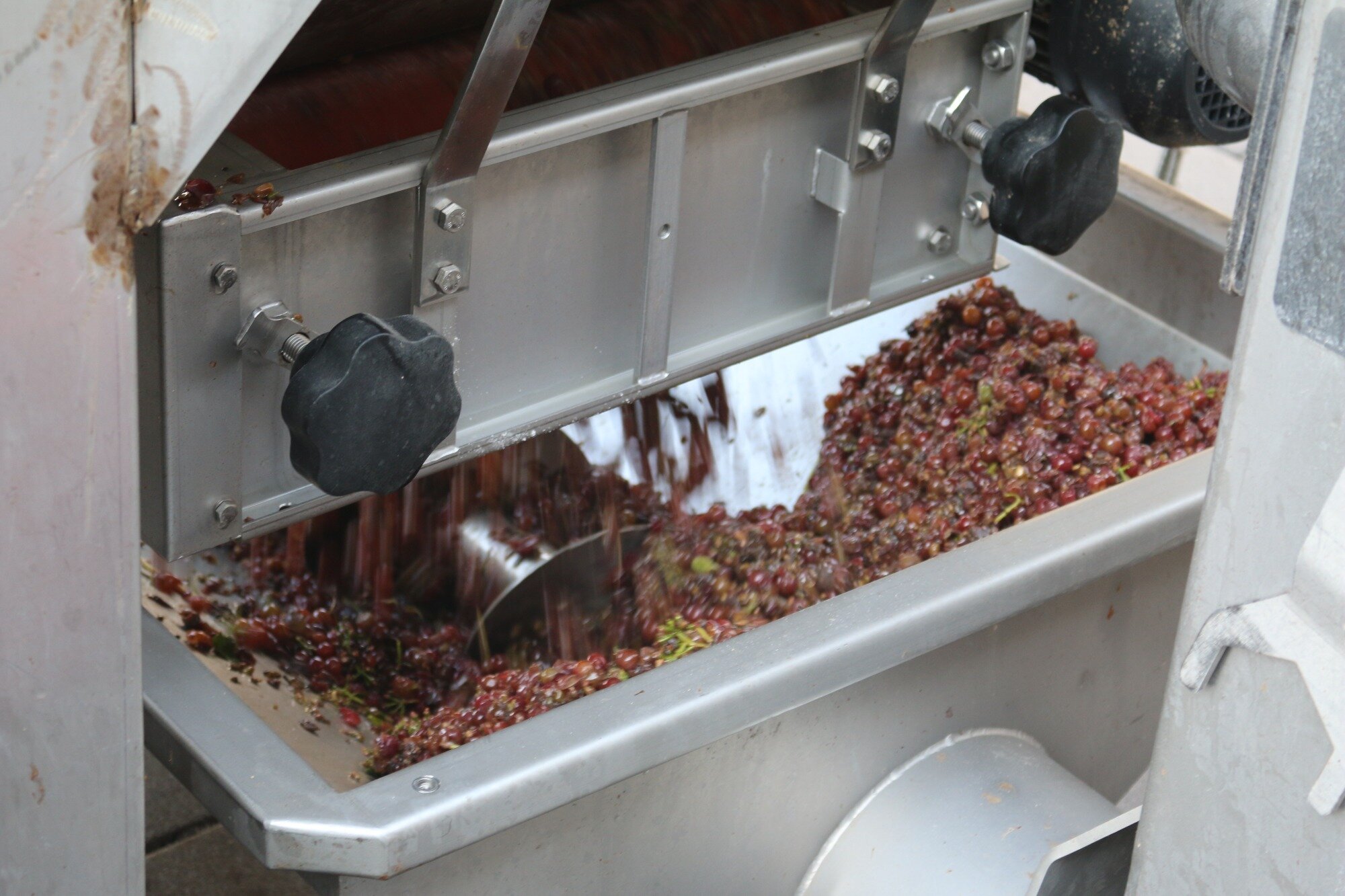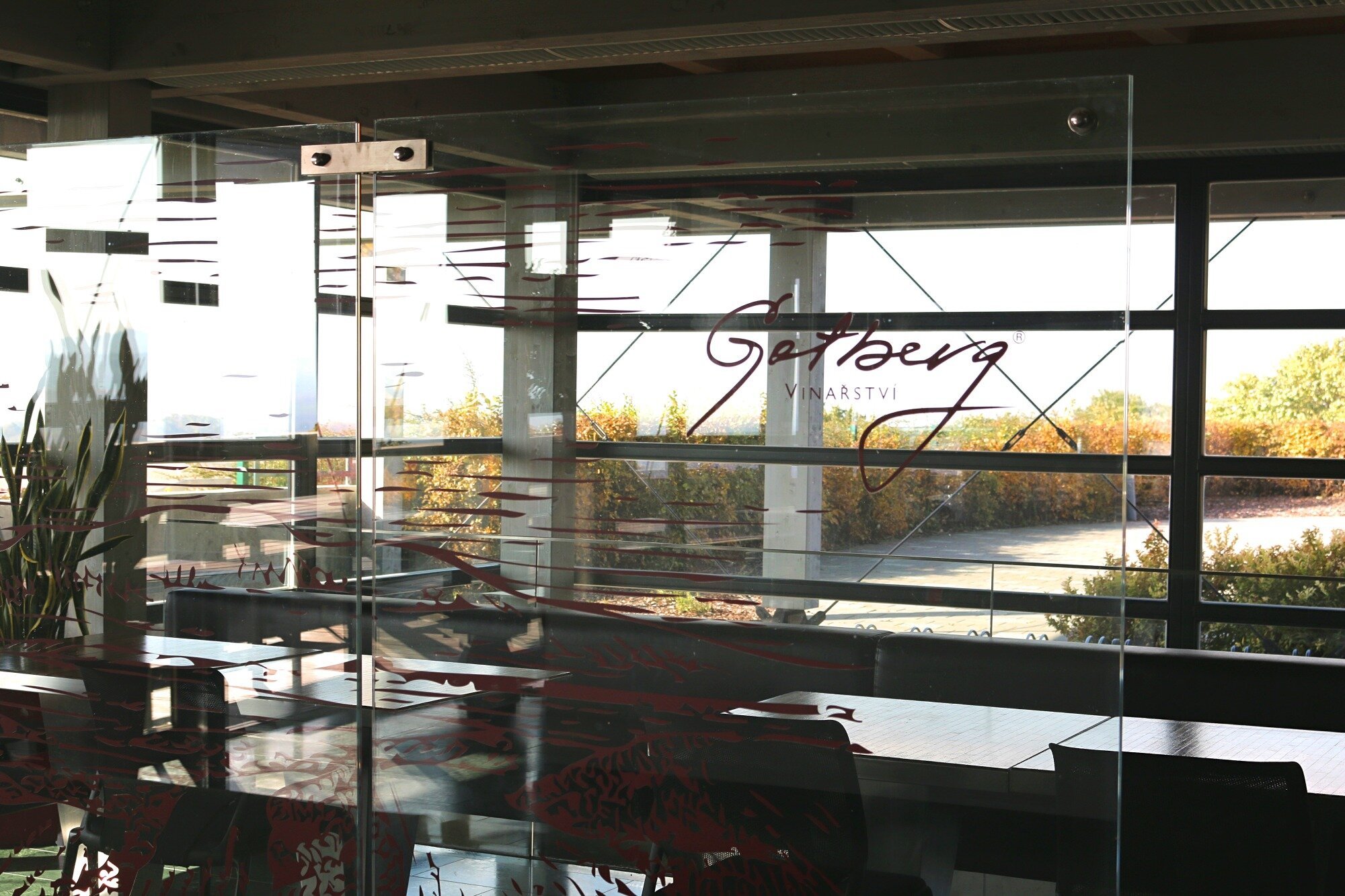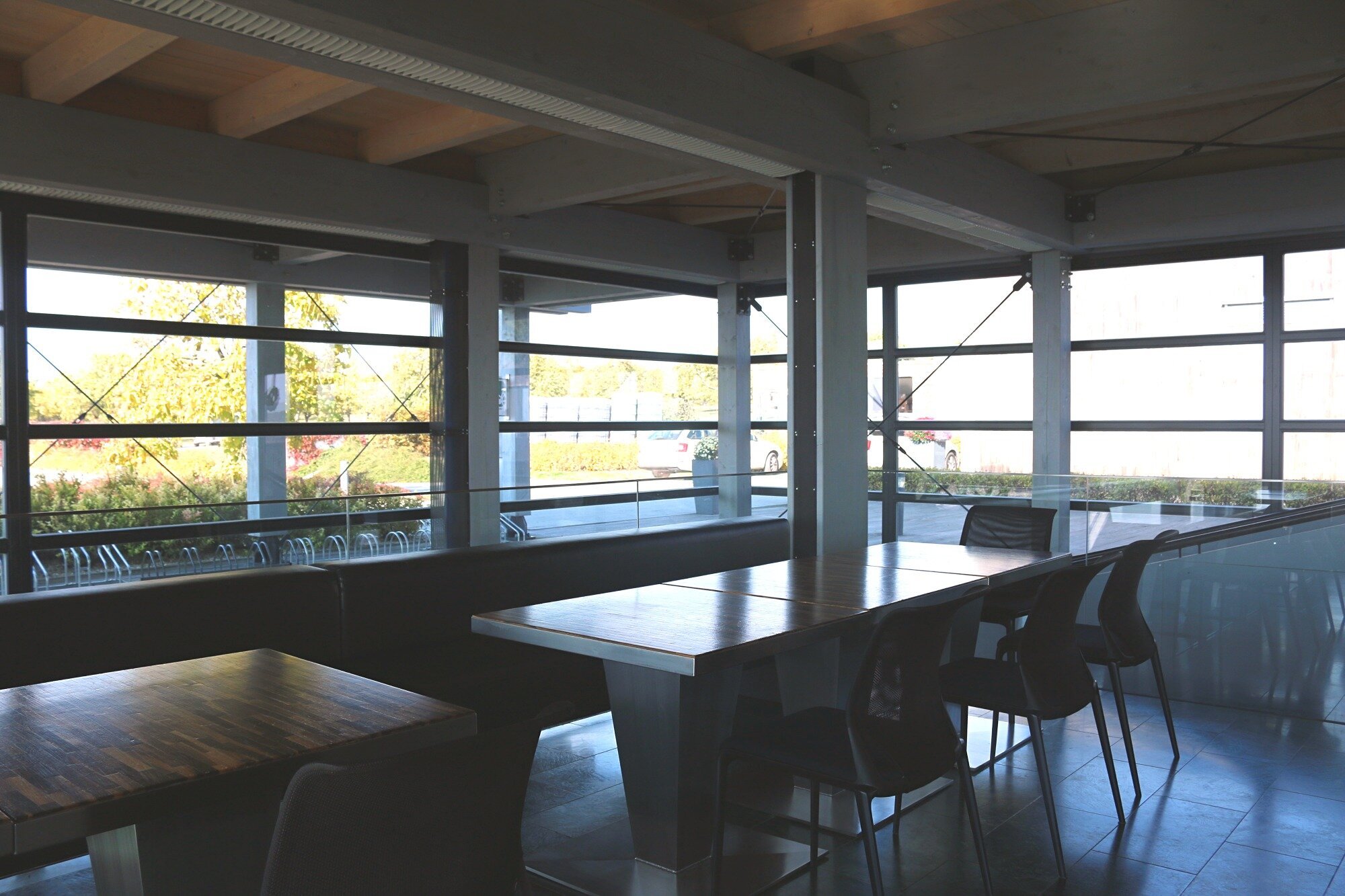Gotberg Vinařství
The vineyards at Gotberg
After each trip to the vineyards in the Czech Republic, the Moravian wine industry continues to exceed my expectations. Since the fall of communism in 1989, winemaking has advanced at a rapid pace and a Moravian wine revolution has taken hold. Wineries are no longer content to simply produce mediocre table wine, as they did in the early 1990’s. Producers are encouraged to break from the status quo and focus their attention instead on creating exceptional, authentic wine that represents their region. Innovative, high tech wineries seem to be popping up everywhere, responding to the increasing demands of the savvy Czech wine consumer.
As someone who considers themselves health conscious and environmentally aware, I am always on the hunt for organic and biodynamic producers. In addition to being environmentally sustainable, an elimination of harmful chemicals in the vineyards protects the integrity of the grapes while distinguishing their unique microclimate and terroir specificity. After all, I want to enjoy high quality, local wine that represents the region where I live, without loading my body full of pesticides and herbicides.
A recent trip to Gotberg Winery helped me realize just how important these emerging, organic practices are in the Moravian wine world. By respecting nature and dedicating oneself to sustainable, honest winemaking, the wines gain a defined sense of identity and character.
Just a few weeks ago, I had a chance encounter with Gotberg Winery’s Business Manager, Tereza Kučerová, at my wine seminar in Brno. After a quick chat and email exchange, we set up an appointment for a visit. I was anxious to get back to wine country, and to discover another example of organic winemaking here in South Moravia.
GOTBERG Vinařství
The Gotberg Winery lies nestled in the small village of Popice, with a population of just 1000 people, in the heart of the Břeclav district. To put things in perspective, my high school graduating class in New York had 550 students, so I knew I was headed to a typical, tiny Czech village. Yet population statistics aside, the winemaking tradition in Popice dates back to the 13th century, and the villages customs and wine preferences reflect their diverse history.
Although hundreds of years have passed since the first established wine production in Popice, grape varieties like Riesling and Welschriesling continue to dot the landscape, while others, like Pálava and Muscat Moravia are relatively new to the scene. Today, the Gotberg Winery grows over a dozen grape varieties that reflect the unique microclimate of this small village, distinguishing themselves as a leader in organic vineyard management.
I hopped aboard a morning commuter train from Brno Dolní Nádraží (check out those leather seats!) to Popice.
Tereza kindly picked me up at the train station and we chatted amicably as we drove back for my tour. Slowly meandering up the curvy dirt road leading to the winery, my gaze instantly fell to their impressive tasting room, surrounded by the estate’s sprawling vineyards.
Stará Hora Vineyards at Gotberg Winery
The sun was shining and a cool breeze greeted us as we strolled towards the tasting room.
Upon our arrival, we were greeted by the winemaker and cellar hands in the adjacent parking lot, as the harvest and processing of the Pálava grapes was happening in full force. After all, it’s harvest time!
Entering the tasting room, I was shocked at the contemporary aesthetic and open space concept, as it is rare to see this type of modernist architecture in South Moravia. Traditionally, wineries forego the contemporary approach for a more rustic interior appeal. The majority of cellars, wineries and tasting rooms are simple, underground edifices, carved into the bedrock on the village’s main road. But Gotberg’s space was spectacular and spacious, and immediately I knew I was in for a treat.
First established in 2003, Gotberg Winery is the embodiment of forward thinking. Their vines were carefully selected by oenologists to be able to adjust to the soil and climate, while producing a harmoniously styled wine, reflective of the terroir. The winery was constructed in 2008, and the following year was awarded "Best Industrial Design in the South Moravian Region for 2009.” This prestigious accolade is certainly well deserved, considering the functional and aesthetic aspects that went into the building’s original design and decor. The Gotberg winery was constructed with purpose, as the multi tiered floors in the winery facilitate a gravity-fed design. This highly enviable architectural feature allows for an overall gentler wine-making process, allowing gravity to play a significant role in the gentle transport of wine from fermentation tank to barrel.
The open concept of the winery’s degustation rooms allow for guests to enjoy clean lines, contemporary furniture and sound, structural integrity. The concrete pillars and winding staircases facilitate an ease of movement throughout the space, while creating an extraordinarily unique aspect of cutting edge interior design.
Diamond Tasting Room
The Diamond Tasting Room, featuring display bottles from some of their first vintages from 2010, offers a space for private functions and group tastings. Gotberg Winery provides seven lodging rooms which can easily accommodate any special occasion: from a simple weekend getaway, a bachelorette party or a romantic couples escape to wine country.
Gotberg takes its name from a German translation of “God’s Hill.” (Got=Gott=God, Berg=Hill), a reference to the sprawling hillsides that surround the winery. Their 54 hectares of vineyards are spread throughout the village, covering an expansive area that includes five separate parcels : Sonberk, Panenský kopec, Svidrunk, Stará Hora and Unédy. The winery’s mission is simple: to produce organic, regionally specific wines using carefully executed and specialized viticulture practices.
Last year’s production topped 150,000 bottles, with the large majority destined for restaurants and wine bars in the Czech Republic.
Just a peek at their storage facilities
Additionally, Gotberg Winery recently took home the Decanter Platinum Medal for their Late Harvest Riesling 2016, a prestigious prize for a winery that in my opinion, will soon take the international wine scene by storm.
The Wines
Some featured wines at Gotberg Winery
After touring through their production facility, I was eager to start sampling the wines. Tereza escorted me outside to their open air, sun soaked terrace, where she opened up sample after sample for us to try. This is the ultimate in wine paradise.
I was astounded by each wine’s distinctive qualities, textures and aromas. Each bottle had a certain finesse, a distinctive minerality, and pervasive fruitiness that was both apparent on the nose and palate. By investing largely in high volume crushers, bottling machines and French and Acacia oak barrels, their wines were certainly reflective of these massive investments. The wines maintained their varietal integrity, while showcasing a perfumed bouquet, rounded texture, and reflection of the terroir of Popice.
Riesling and Sylvaner
We started off the tasting with the Sylvaner 2018 Pozdní Sběr, a refreshingly zippy white wine with loads of limestone minerality, citrus and kiwi tones. Oftentimes, Sylvaner can be unidentifiable, as lighter versions can be devoid of fruit or texture. Yet Gotberg’s Sylvaner was exceptionally bright, fruity and crisp, perfect for this sunny morning tasting.
Next up was their Riesling 2018 Pozdní Sběr, which offered an aromatic, floral foray into my favorite grape varietal. Balanced by a softly textured palate displaying honeyed notes of peaches and apricots, a prickly backbone of acidity greeted the tongue with unwavering elegance.
Some of my other standouts from their incredible selection of wines included their Dry Pálava 2017, their Polosuché Tramín Červený 2018 and their barrel-aged Merlot 2016.
Pálava is a grape indigenous to the Czech Republic and was the result of a mid 20th century crossing of Gewürztraminer and Müller Thurgau. The resulting wines are typically produced as a sweeter version in the Czech Republic, because of the grape’s inherent high sugar content and late ripening capability. Yet Gotberg does it differently. They ferment their Pálava to the point of completion, resulting in a deliciously dry style. A slightly concentrated yellow color was readily apparent in the glass, while aromas of beeswax, rose, white pepper and lychee were delicate on the nose. Lusciously plump fruit on the palate was met with lingering acidity and a prolonged finish.
The Tramín Červený 2018 definitely hit all of my taste buds with just one sip. The wine was slightly sweet, coming in at 9 grams of residual sugar/Liter. Typically, I prefer dry white wines, yet this particular style offered something refreshingly different: a perfumed nose of tropical fruit, white flowers and distinctive limestone minerality. A mouthwatering example of Gewürztraminer, I can only imagine a glass sitting alongside grilled Bratwursts and spicy mustard.
I am a self-professed sucker for Merlot, despite the lack of enthusiasm that was so eloquently stated in the hit movie “Sideways.” You can imagine my astonishment after sampling the Gotberg Merlot for the first time. This wine instantly transported me to Saint Emilion, where Merlot is the reigning King of the vineyards.
In 2003, the red varieties, including Merlot, Frankovka and Pinot Noir, were among the first vines planted at Gotberg. Therefore, the older age of these vines is reflective in the developed, earthy aspect of their red wines. Aged partly in French barrique, their 2016 Merlot in particular had an excellent concentration of color, tannin and fruit, offering aromas of fig, black plums and blood orange. The palate was richly textured, with balanced acidity, integrated, sweet tannins and a long finish. This wine was truly exceptional, and proves that South Moravia can produce more than just aromatic white wines.
I am living in a wine paradise here in South Moravia, where I am constantly taken aback by the extent of high quality, organic wine producers, nestled in this tiny wine region. I never imagined this kind of opportunity, to immerse myself in the Czech wine community, tasting top quality producers and hearing first hand the stories behind the wineries. This country will soon take the global wine market by storm, and I am glad to be the American sommelier in the midst of it all.














